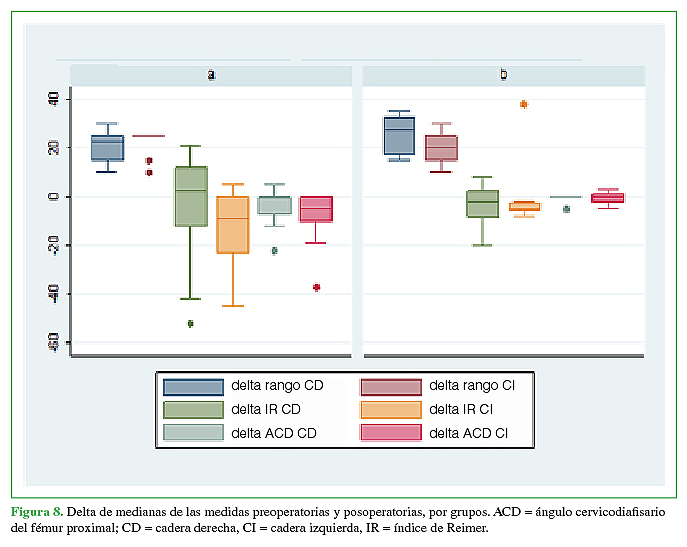Medial transphyseal screw placement for spastic hip treatment in children with cerebral palsy. Effectiveness and safety
Main Article Content
Abstract
Level of Evidence: III
Downloads
Metrics
Article Details
Manuscript acceptance by the Journal implies the simultaneous non-submission to any other journal or publishing house. The RAAOT is under the Licencia Creative Commnos Atribución-NoComercial-Compartir Obras Derivadas Igual 4.0 Internacional (CC-BY-NC.SA 4.0) (http://creativecommons.org/licences/by-nc-sa/4.0/deed.es). Articles can be shared, copied, distributed, modified, altered, transformed into a derivative work, executed and publicly communicated, provided a) the authors and the original publication (Journal, Publisher and URL) are mentioned, b) they are not used for commercial purposes, c) the same terms of the license are maintained.
In the event that the manuscript is approved for its next publication, the authors retain the copyright and will assign to the journal the rights of publication, edition, reproduction, distribution, exhibition and communication at a national and international level in the different databases. data, repositories and portals.
It is hereby stated that the mentioned manuscript has not been published and that it is not being printed in any other national or foreign journal.
The authors hereby accept the necessary modifications, suggested by the reviewers, in order to adapt the manuscript to the style and publication rules of this Journal.
References
2. Mandaleson A, Lee Y, Kerr C, Graham HK. Classifying cerebral palsy: are we nearly there? J Pediatr Orthop
2015;35(2):162-6. https://doi.org/10.1097/BPO.0000000000000222
3. Cooke PH, Cole WG, Carey RP. Dislocation of the hip in cerebral palsy. Natural history and predictability. J Bone
Joint Surg Br 1989;71(3):441-6. PMID: 2722938
4. Miller F, Cardoso Dias R, Dabney KW, Lipton GE, Triana M. Soft-tissue release for spastic hip subluxation in
cerebral palsy. J Pediatr Orthop 1997;17(5):571-84. https://doi.org/10.1097/00004694-199709000-00003
5. Flynn JM, Millar F. Management in hip disorders in patients with cerebral palsy. J Am Acad Orthop Surg
2002;10(3):198-209. https://doi.org/10.5435/00124635-200205000-00006
6. Andrisano A, Marchiodi L, Preitano M. Epiphyseodesis of the great trochanter. Ital J Orthop Traumatol
1986;12(2):217-22. PMID: 3793460
7. Davids JR, Valadie AL, Ferguson RL, Bray EW 3rd, Allen BL Jr. Surgical management of ankle valgus in children:
use of a transphyseal medial malleolar screw. J Pediatr Orthop 1997;17(1):3-8. PMID: 8989691
8. Stevens PM, Belle RM. Screw epiphysiodesis for ankle valgus. J Pediatr Orthop 1997;17(1):9-12. PMID: 8989692
9. Métaizeau JP, Wong-Chung J, Bertrand H, Pasquier P. Percutaneous epiphysiodesis using transphyseal screws
(PETS). J Pediatr Orthop 1998;18(3):363-9. PMID: 9600565
10. Beals RK, Shea M. Correlation of chronological age and bone age with the correction of ankle valgus by surface epiphysiodesis of the distal medial tibial physis. J Pediatr Orthop B 2005;14(6):436-8.
https://doi.org/10.1097/01202412-200511000-00009
11. Stevens PM, Novais EN. Multilevel guided growth for hip and knee varus secondary to chondrodysplasia. J Pediatr Orthop 2012;32(6):626-30. https://doi.org/10.1097/BPO.0b013e3182567a79
12. McCarthy JJ, Noonan KJ, Nemke B, Markel M. Guided growth of the proximal femur: a pilot study in the lamb
model. J Pediatr Orthop 2010;30(7):690-4. https://doi.org/10.1097/BPO.0b013e3181edef71
13. d’Heurle A, McCarthy J, Klimaski D, Stringer K. Proximal femoral growth modification: effect of screw, plate, and drill on asymmetric growth of the hip. J Pediatr Orthop 2018;38(2):100-4. https://doi.org/10.1097/BPO.0000000000000771
14. Wei-Chun Lee, Hsuan-Kai Kao, Wen-E Yang, Pei-Chi Ho, Chia-Hsieh Chang. Guided growth of the proximal femur for hip displacement in children with cerebral palsy. J Pediatr Orthop 2016;36(5):511-5.
https://doi.org/10.1097/BPO.0000000000000480
15. Torode IP, Young JL. Caput valgum associated with developmental dysplasia of the hip: management by
transphyseal screw fixation. J Child Orthop 2015;9(5):371-9. https://doi.org/10.1007/s11832-015-0681-9
16. Portinaro N, Panou A, Gagliano N, Pelillo F. D.D.S.H.: Developmental dysplasia of the spactic hip: Strategies of
management in cerebral palsy. A new suggestive algorithm. Hip Int 2009;19(Suppl 6):S69-74.
https://doi.org/10.1177/112070000901906s12
17. Portinaro N, Turati M, Cometto M, Bigoni M, Davids JR, Panou A. Guided growth of the proximal femur for the
management of hip dysplasia in children with cerebral palsy. J Pediatr Orthop 2019;39(8):e622-8.
https://doi.org/10.1097/BPO.0000000000001069
18. Carreño-Mora F, Ortiz-Corredor F, Espinosa-García E, Pérez-Hernández CE. Validación de un instrumento para
evaluar la carga del cuidador en parálisis cerebral. Rev Salud Pública (Bogota) 2015;17(4):578-88.
https://doi.org/10.15446/rsap.v17n4.35593
19. Dindo D, Demartines N, Clavien PA. Classification of surgical complications. A new proposal with evaluation in a cohort of 6336 patients and results of a survey. Ann Surg 2004;240(2):205-13.
https://doi.org/10.1097/01.sla.0000133083.54934.ae
20. Presedo A, Oh CW, Dabney KW, Miller F. Soft-tissue releases to treat spastic hip subluxation in children with
cerebral palsy. J Bone Joint Surg Am 2005;87(4):832-41. https://doi.org/10.2106/JBJS.C.01099
21. García Mata S, Duart Clemente J. Cirugía preventiva de la luxación de cadera espástica. En: Martínez Caballero
I, Abad Lara JA (eds.). Parálisis cerebral infantil. Manejo de las alteraciones músculo-esqueléticas asociadas.
Madrid: Ergon; 2016:79-92.

